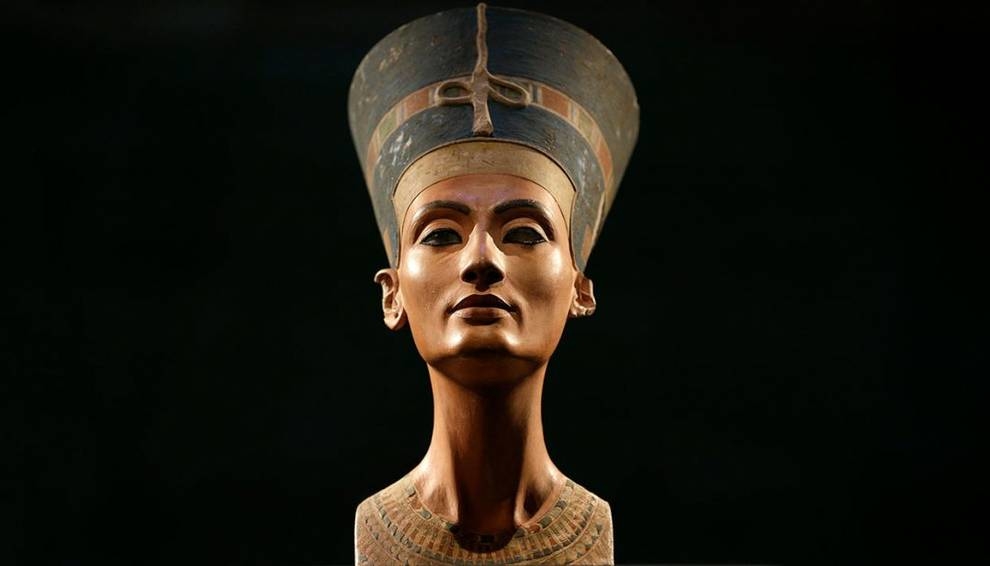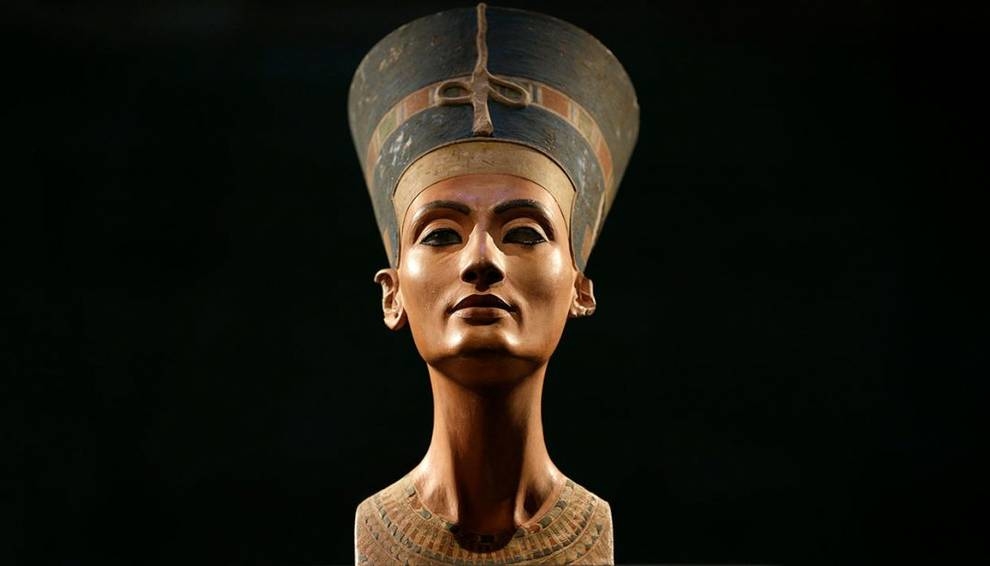
Nefertiti: "Beauty has come"
Approximately in 1351 BC. E., when Amenhotep III was already over fifty, Taduhepa, the youngest daughter of Tsar Mitanni Tushratta, arrived in Egypt as a bride. However, Pharaoh soon died after 38 years of successful rule and in the same year Taduhepa married his son and co-regent Amenhotep IV, receiving a new Egyptian name - Nefertiti ("Beauty has come").
Trying to strengthen his autocratic power, Amenhotep IV, relying on the noble nobility, spoke out against the priests of the chief god Amon-Ra. He introduced the cult of the little-known god Aton, who personified the solar disk.
In the fourth year of his reign, Pharaoh changed his name to Akhenaten, proclaimed himself an absolute deity, and Nefertiti the priestess of the pharaoh god. She became a living embodiment of the solar power that gives life to all that exists.

Nefertiti played an exceptionally important role in religious life, accompanying her husband during sacrifices, rituals and religious festivals. Her statues prayed and sacrificed.
Most often, Nefertiti was portrayed in her favorite headgear - a tall blue wig, embroidered with golden ribbons and uremia (stylized image of a cobra), which symbolically emphasized her connection with the terrible goddesses, daughters of the Sun.
Nefertiti gave birth to six daughters, until in 1337 BC. all the references to it have not disappeared: the chief wife of Akhenaten first became Kiya, and later the eldest daughter of Nefertiti and Akhenaten Meritaton, who also gave him two daughters.
Nefertiti survived her husband for several years and died around 1330 BC. in Thebes shortly before his 40th birthday. There is a suggestion that she ruled Egypt under the name of Smenkhkar, until in 1333 BC. On the throne, the son of Amenhotep IV, Pharaoh Tutankhamun, did not ascend.
Trying to strengthen his autocratic power, Amenhotep IV, relying on the noble nobility, spoke out against the priests of the chief god Amon-Ra. He introduced the cult of the little-known god Aton, who personified the solar disk.
In the fourth year of his reign, Pharaoh changed his name to Akhenaten, proclaimed himself an absolute deity, and Nefertiti the priestess of the pharaoh god. She became a living embodiment of the solar power that gives life to all that exists.

Photo © jnsm.com.ua
Nefertiti played an exceptionally important role in religious life, accompanying her husband during sacrifices, rituals and religious festivals. Her statues prayed and sacrificed.
Most often, Nefertiti was portrayed in her favorite headgear - a tall blue wig, embroidered with golden ribbons and uremia (stylized image of a cobra), which symbolically emphasized her connection with the terrible goddesses, daughters of the Sun.
Nefertiti gave birth to six daughters, until in 1337 BC. all the references to it have not disappeared: the chief wife of Akhenaten first became Kiya, and later the eldest daughter of Nefertiti and Akhenaten Meritaton, who also gave him two daughters.
Nefertiti survived her husband for several years and died around 1330 BC. in Thebes shortly before his 40th birthday. There is a suggestion that she ruled Egypt under the name of Smenkhkar, until in 1333 BC. On the throne, the son of Amenhotep IV, Pharaoh Tutankhamun, did not ascend.


